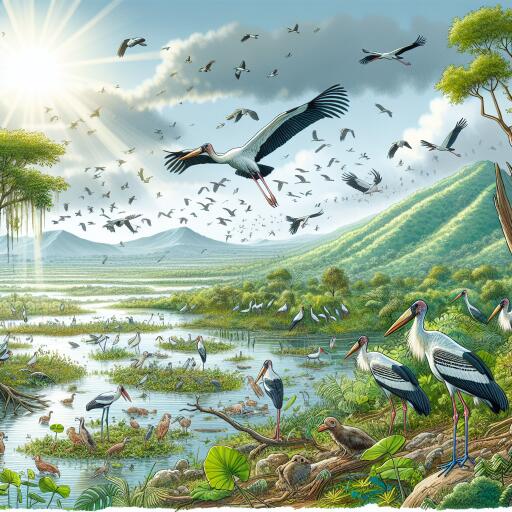
Adjutant Stork Population On Rise – The Hills Times
In the shadow of widespread environmental concerns and habitat destruction wreaking havoc on the natural world, there emerges a glimmer of hope for wildlife enthusiasts in the region. The greater adjutant stork, a species once teetering on the brink of extinction, is now showing signs of a promising comeback, thanks to relentless conservation efforts and heightened awareness among the local communities.
A recent survey in the district spearheaded by a passionate bird watching enthusiast has revealed a heartening increase in the population of the greater adjutant stork, known locally as ‘hargilla.’ With a majestic wingspan of 250 cm and standing up to 150 cm tall, these birds are not only one of the largest stork species but also among the most striking with their distinctive gait reminiscent of a military march. This survey highlighted the presence of more than 25 of these magnificent birds, including several sightings of nesting pairs in the heart of the urban landscape, signifying an adaptable resilience in the face of urban expansion.
Widely recognized in the IUCN Red List of Threatened Species, the greater adjutant faces threats from various fronts, including habitat destruction primarily due to deforestation, and the adverse impacts of pesticides applications in agriculture. Notable declines in their populations were observed in the late 20th century, with estimates around 600 individuals. However, recent conservation initiatives have sparked a remarkable turnaround, with numbers now estimated to be significantly higher, reflecting an encouraging trend towards recovery.
The story of the adjutant stork is deeply intertwined with the history and ecology of the Brahmaputra Valley, a region that, until a few decades ago, served as a thriving haven for these birds. Their presence in the wetlands and marshes surrounding this area signals not only an ecological triumph but also a cultural one, as communities start to embrace these birds as integral to their natural heritage. However, this was not always the case.
Environmentalists and local NGOs have played a pivotal role in this comeback story, focusing on habitat preservation, education, and active engagement with farmers to mitigate the use of harmful pesticides. The designation of critical areas as protected zones, such as the Panidihing Birds Sanctuary, has been crucial in providing safe havens for these and other avian species. The sanctuary itself spans over 8370.71 acres and stands as a testament to the positive impacts of wildlife legislation and community involvement in conservation.
The diet of the greater adjutant, predominantly comprising aquatic creatures, carrion, and occasionally small birds, underscores the importance of maintaining healthy wetland ecosystems not just for the storks but for a myriad of other species that share this habitat. The resurgence of tall nesting trees and the revival of rich feeding grounds have been instrumental in this species’ gradual return from the margins to a more stable population status.
The journey of the greater adjutant from the edge of disappearance to a symbol of successful conservation is a beacon of hope in the fight against biodiversity loss. It serves as a powerful reminder of what can be achieved when communities, conservationists, and policymakers unite with a common goal of preserving our natural world for future generations. The continued rise in the population of these iconic birds, against all odds, is not only an ecological victory but a clarion call to intensify our efforts in safeguarding our planet’s remarkable biodiversity.





Leave a Reply